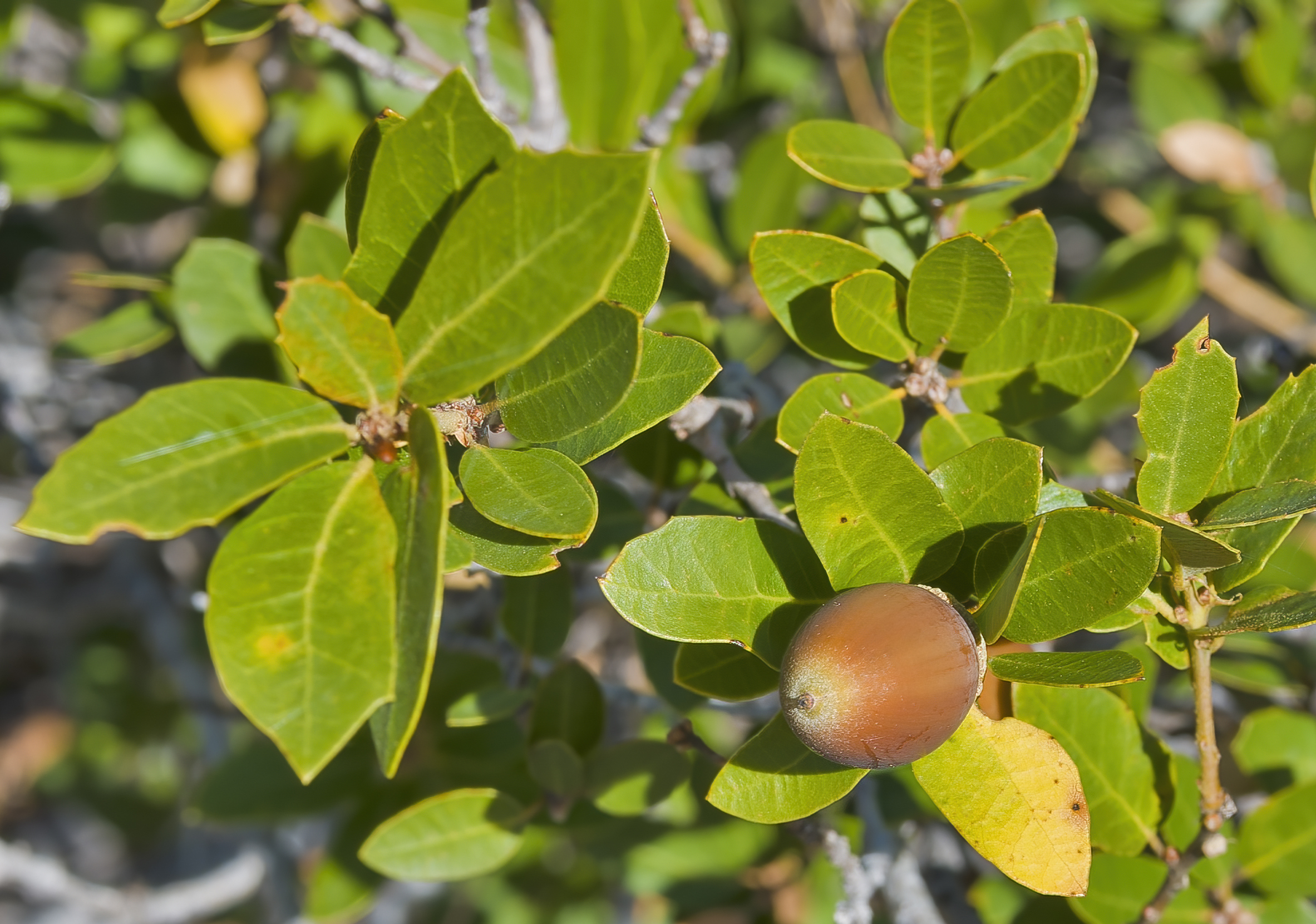Huckleberry oak
(Quercus vacciniifolia)

Description
Quercus vacciniifolia (sometimes spelled Q. vaccinifolia), the huckleberry oak, is a member of the Protobalanus section of genus Quercus. It has evergreen foliage, short styles, very bitter acorns that mature in 18 months, and a woolly acorn shell interior. Quercus vacciniifolia is a shrubby evergreen of the oak family, which grows generally less than 1.5 m (5 feet) tall and spreads horizontally, never becoming a tree. In the field, it is best identified from its clustered terminal buds, which is characteristic of all plants of the genus. Species are more easily identified in the presence of acorns. Acorns of Q. vacciniifolia mature in 2 years (biennial maturation) after pollination. Flowers and inflorescence characteristics are not used to significant extend in this genera. Quercus vacciniifolia can be easily confused with Quercus cedrosensis, which grows in dry chaparrals, such as California-Mexico border south, forests of Baja California and at higher elevations on Cedros Island. Morphologically, the two species differ in their leaf margins: while Q. vacciniifolia leaves are entire to mucro-toothed, Q. cedrosensis leaves are entire or have irregular spine-tipped teeth. Quercus vacciniifolia is native to the western United States, where it can be found in the Sierra Nevada of California, where its distribution extends just into Nevada, and the Klamath Mountains and southern Cascade Range as far north as southern Oregon. It grows in high mountain forests. It also dominates sections of mountain chaparral. Quercus vacciniifolia can be found in steep slopes, ridges, conifer forests, and sub-alpine forest, mostly in high montane area at altitudes of 150 to 2930 m. It is native of California, but can also be found in Oregon and Nevada. Hybridization between Q. vacciniifolia and Q. chrysolepis has been extensively reported in Sierra Nevada. Between the early and middle Holocene, 11000 and 5000 cal years BP, Q. vacciniifolia were an extensive shrub in the Klamath Mountains (at the northern portions of California), which had ultramafic soils. At this period, Q. vacciniifolia was a main fire developer due to its abundance, mid-height and resinous leaves. Today, Q. vacciniifolia rarely forms dense chaparral-like stands, allowing fire resistant species to grow intermittently.
Taxonomic tree:







